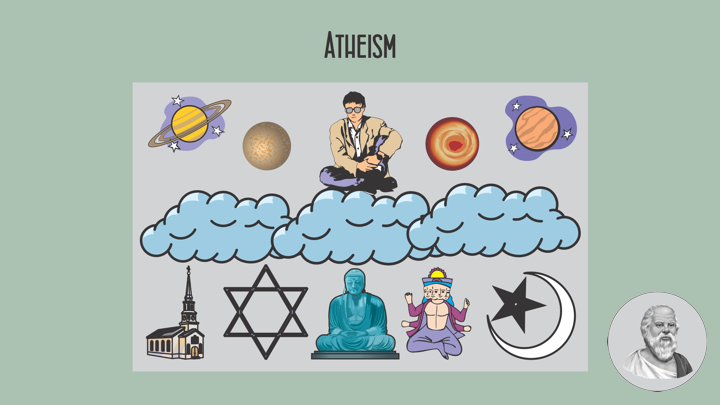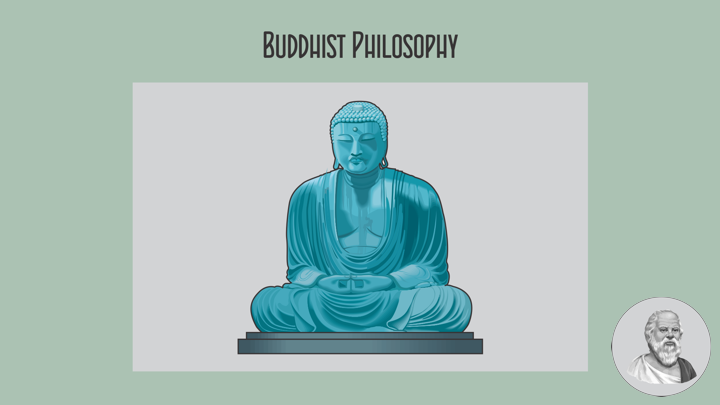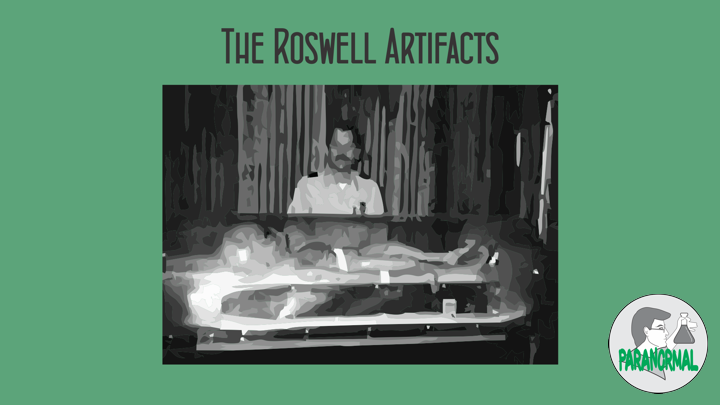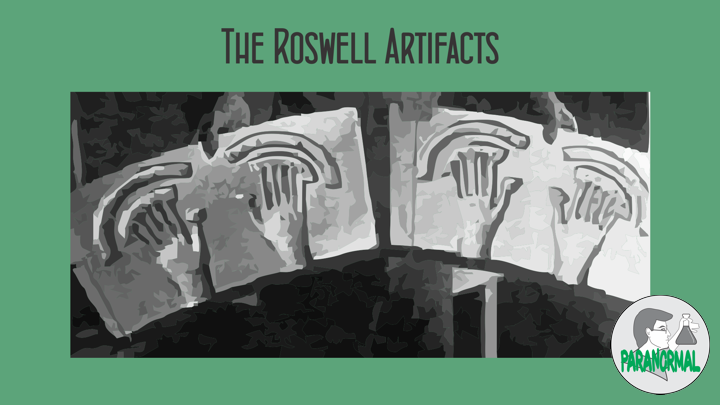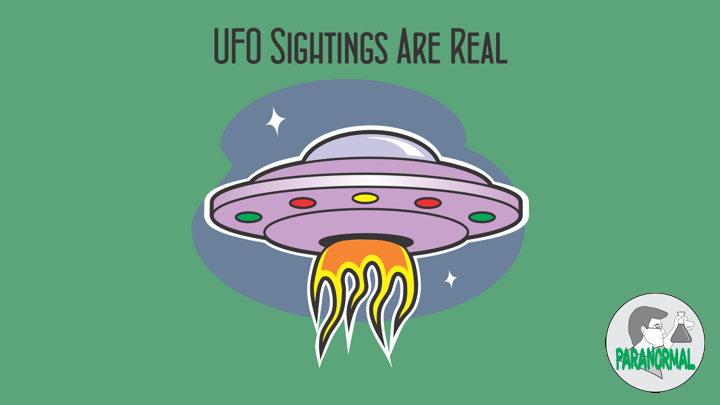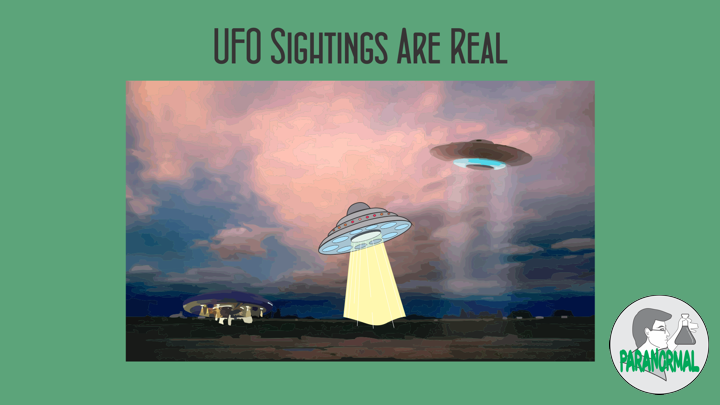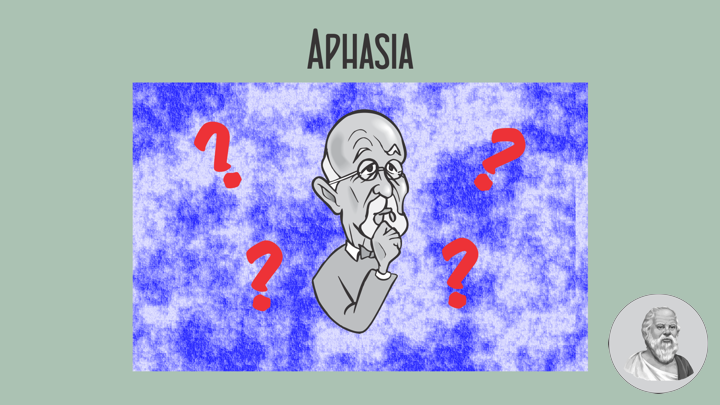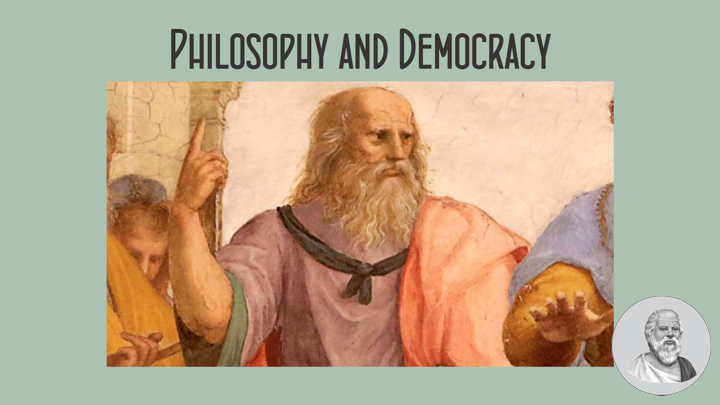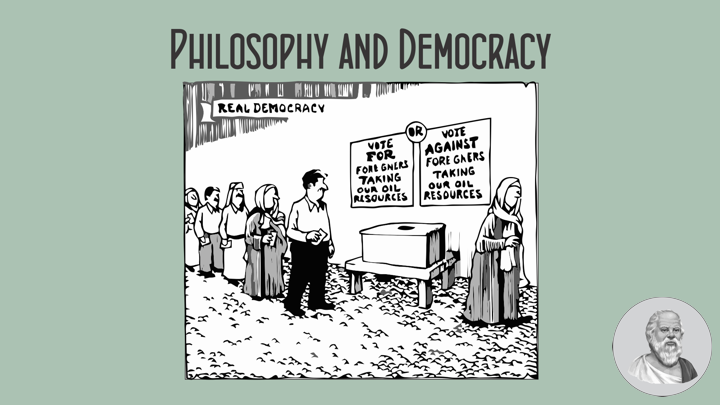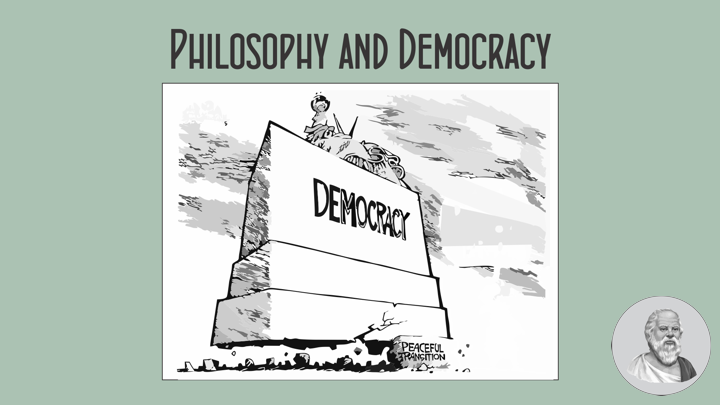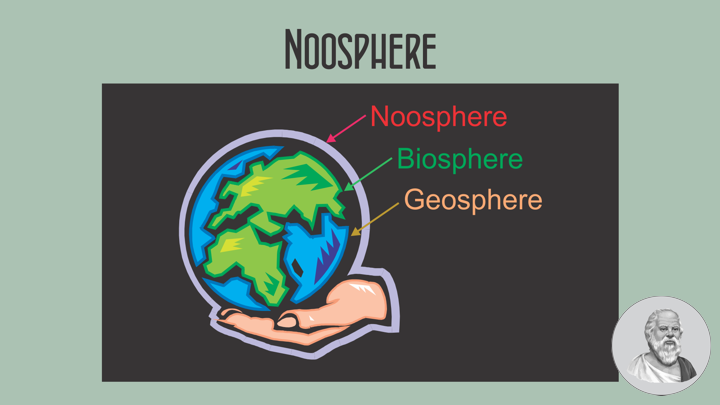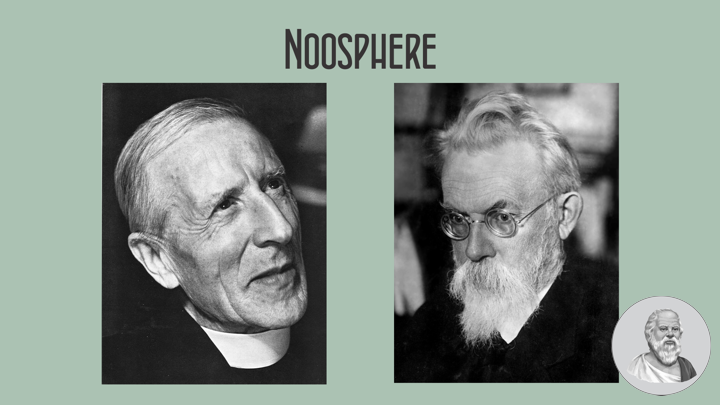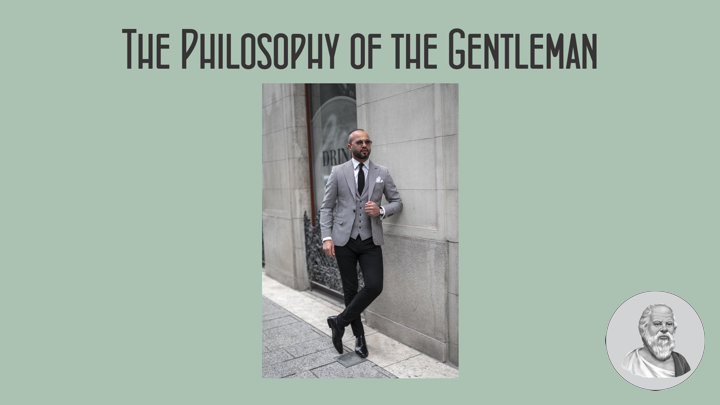Spiritualism
——
#Spirituality #Philosophy #Atheism #WorkLifeBalance
——
——
Atheism
The term “Atheist” describes a person who does not believe that God or a divine being exists. Worldwide there may be as many as a billion atheists, although social stigma, political pressure, and intolerance make accurate polling difficult. For the most part atheist and they have argued that the evidence in favor of God’s existence is too weak, or the arguments in favor of concluding there is no God are more compelling.
Atheism, in the broadest sense, is an absence of belief in the existence of deities. Less broadly, atheism is a rejection of the belief that any deities exist. In an even narrower sense, atheism is specifically the position that there are no deities. Despite the fuzzy definitions, researchers are beginning to home in on the factors that influence whether someone believes. According to this line of thinking, people with stronger analytical abilities are more likely to be nonbelievers, since belief in a higher power requires having faith in something that can’t be proven. The flip side of that argument is that believers may be more inclined toward intuitive thinking trusting their guts that a god exists, even in the absence of hard evidence.
Atheism is not an affirmative belief that there is no god nor does it answer any other question about what a person believes. It is simply a rejection of the assertion that there are gods. Atheism is too often defined incorrectly as a belief system. To be clear: Atheism is not a disbelief in gods or a denial of gods; it is a lack of belief in gods.
Atheism is not a belief system nor is it a religion. While there are some religions that are atheistic, that does not mean that atheism is a religion. To put it in a more humorous way: If atheism is a religion, then not collecting stamps is a hobby.
Despite the fact that atheism is not a religion, atheism is protected by many of the same Constitutional rights that protect religion. That, however, does not mean that atheism is itself a religion, only that our sincerely held lack of beliefs are protected in the same way as the religious beliefs of others.
Science is based on the observation that the universe is governed by natural laws that can be tested and replicated through experiment. It serves as a reliable, rational basis for predictions and engineering. Like scientists, scientific skeptics use critical thinking to decide claims. They do not base claims on faith or other unfalsifiable categories.
Luc Paquin
——
#Spirituality #Philosophy #BuddhistPhilosophy #WorkLifeBalance
——
——
Buddhist Philosophy
Buddhism, philosophy that developed from the teachings of the Buddha, a teacher who lived in northern India between the mid-6th and mid-4th centuries BCE. Spreading from India to Central and Southeast Asia, China, Korea, and Japan, Buddhism has played a central role in the spiritual, cultural, and social life of Asia, and, beginning in the 20th century, it spread to the West. This entry concerns the historical individual, traditionally called Gautama, who is identified by modern scholars as the founder of Buddhism. According to Buddhist teachings, there have been other buddhas in the past, and there will be yet more in the future. The title “Buddha”, which literally means “Awakened”, is conferred on an individual who discovers the path to nirvana, the cessation of suffering, and propagates that discovery so that others may also achieve nirvana. This entry will follow modern scholarship in taking an agnostic stance on the question of whether there have been other buddhas, and likewise for questions concerning the superhuman status and powers that some Buddhists attribute to buddhas. The concern of this entry is just those aspects of the thought of the historical individual Gautama that bear on the development of the Buddhist philosophical tradition.
Four noble truths as preached by Buddha are that the life is full of suffering, that there is a cause of this suffering, it is possible to stop suffering, and there is a way to extinguish suffering. Eight fold Path as advocated by Buddha as a way to extinguish the sufferings are right views, right Resolve and Aspiration, right speech, right Action and Conduct, right livelihood, right effort right mindfulness and right concentration. In epistemology, the Buddha seeks a middle way between the extremes of dogmatism and skepticism, emphasizing personal experience, a pragmatic attitude, and the use of critical thinking toward all types of knowledge.
Mid-twentieth century saw the collaborations between many psychoanalysts and Buddhist scholars as a meeting between “Two Of The Most Powerful Forces” operating in the Western mind. Buddhism and Western Psychology overlap in theory and in practice. Over the last century, experts have written on many commonalities between Buddhism and various branches of modern western psychology like phenomenological psychology, psychoanalytical psychotherapy, humanistic psychology, cognitive psychology and existential psychology. We find something more nearly resembling psychotherapy.
Luc Paquin
——
#Paranormal #DrScientist #RoswellArtifacts #ExtrasensoryPerception #Spiritualism #Cryptozoology #Telekinesis #Poltergeists #Ghost #UFO #Alien #Extraterrestrial
——
——
——
——
The Roswell Artifacts
On the evening of July 4, 1947 the night hugs the ground and swallows you up as you drive out of Albuquerque and into the desert. As you head east along 40 and then south along 285 to Roswell, there’s only you and the tiny universe ahead of you defined by your headlights. The black is so clear it looks like the stars shining through it are tiny windows from the beginning of time, millions of them, going on forever. On a hot summer night you can sometimes see flashes of heat lightning explode in the distance. Somewhere it is light for an instant, then the darkness returns.
It’s take of 1961 the file apart that night, even after another nondescript wooden crate that looked like something you ship in was carted. No wonder no one had really wanted anything to do with this junk, which held out the promise of a whole world we knew nothing about but that as far back as 1947, the government had decided to keep an absolute secret.
First there were the tiny, clear, single filament, flexible glass like wires twisted together through a kind of gray harness as if they were cables going into a junction. They were narrow filaments, thinner than copper wire. Then there were the thin two-inch-around matte gray oyster cracker shaped wafers of a material that looked like plastic but had tiny road maps of wires barely raised/etched along the surface.
Some were more rounded or elliptical. It was a circuit, but from the way these wafers were stacked on each other, this was a circuitry unlike any other I’d ever seen. Figure out how to plug it in and what kind of current it carried, but it was clearly a wire circuitry of a sort that came from a larger board of wafers on board the flying craft. The file descriptions accompanying a two piece set of dark elliptical eye pieces as thin as skin.
There was a dull, grayish-silvery foil-like swatch of cloth among these artifacts that you could not fold, bend, tear, or wad up but that bounded right back into its original shape without any creases. All the threads seemed to be going in one direction. The fibers had reoriented themselves to the direction I was pulling in. This couldn’t be cloth, but it obviously wasn’t metal. It of a cloth woven with metal strands that had the drape and malleability of a fabric and the strength and resistance of a metal.
A short, stubby flashlight almost with a self-contained power source that was nothing at all like a battery. When they passed an object in front of the source of the light, it interrupted it, but the beam was so intense the object began smoking. A headband, with electrical signal pickup devices on either side. It seemed to be a one size fits all headpiece that did nothing, at least not for humans. Its source of power was because it came with no batteries or diagrams. As much of the Roswell file as I could and believed that whatever happened, I was doing the right thing.
Report a Roswell Artifacts? Have some Roswell Artifacts footage or a movie camera or a video camera? Have some Roswell Artifacts a picture? The Sassquatch’s Lair, www.sassquatch.org, Paranormal, Name, Email, Comment or Message, Submit…
Dr. Scientist
——
#Paranormal #DrScientist #ExtrasensoryPerception #Spiritualism #Cryptozoology #Telekinesis #Poltergeists #Ghost #UFO #Alien #Extraterrestrial
——
——
——
UFO Sightings Are Real
More than 70,000 reports on unidentified flying objects (UFO) exist in the government files, included among them are tens of thousands of pages of related material, reports, surveys, letters, and investigations that need to be reviewed and studied to gain a complete understanding of the Air Force program of UFO research.
The U.S. government recently confirmed reports by military pilots of unidentified aerial phenomena (UFO), which are more commonly called unidentified flying objects (UFO). The government also acknowledged the need to better understand UFO for the purpose of pilot safety and national security. There was no mention of aliens from other planets visiting Earth, but the possibility was not ruled out. For decades, the U.S. government has denied the existence of UFO, making this a major step.
The Foo Fighters
Though much of the literature about Foo Fighters suggests that they first appeared in the late stages of World War II, and it is true that the name Foo Fighters wasn’t used until 1944, it is also true that the sightings began much earlier than that. On February 26, 1942, just weeks after the American entry into the war, a Dutch sailor in the Timor Sea, near Australia and New Guinea, reported seeing a large, illuminated disk approaching at what he thought was an incredible speed.
Nearly every book about Unidentified Flying Objects (UFO) suggests that the “Modern Era” began on June 24, 1947, when Kenneth Arnold saw nine crescent-shaped objects near Mount Rainier, Washington. But the truth of the matter is that flying saucers, also referred to by many other names, were reported regularly from the beginning of the 1940s. These early manifestations were eventually labeled the “Foo Fighters”, and they were described in ways that made it clear they were much more than just blobs of light seen in the distance.
By the end of 1947, just six months after Mr. Arnold’s UFO sighting, a total of 140 newspapers from across the United States and Canada had reported on 860 UFO sightings. Flying saucers would soon become ubiquitous in comic books, TV shows and movies.
The Military Denies all Evidence of UFOs
Just two weeks after Mr. Arnold’s UFO sighting, the Air Force felt compelled to issue a statement about the crash of a military weather balloon in Roswell, New Mexico. The incident had initially been reported as a possible “Flying Disk” crash. The Air Force explanation did not have the desired effect, and “Roswell” is still synonymous with UFO and theories about government conspiracies to conceal evidence of extraterrestrial activity on Earth.
The Army did send officials to talk to Mr. Arnold, and they officially concluded that he had either seen a mirage or was hallucinating. Nonetheless, UFO sightings persisted. Given the possibility that UFOs might be sophisticated Soviet aircraft, the U.S. Air Force launched a UFO investigation called Project Blue Book in 1952. The project was shut down. For decades, the military would continue to deny any evidence of flying objects that could not be explained, which further emboldened conspiracy theorists.
The Military Acknowledges Existence of UFO
The report focused on UFO witnessed firsthand by military pilots and those registered on aircraft sensors including radar, infrared, electro-optical and weapons seekers. These sensors can provide accurate information about relative size, shape, structure, velocity and range.
All UFO incidents are expected to eventually be included in one of five categories:
- Airborne Clutter: Birds, balloons, recreational drones, plastic bags, etcetera…
- Natural Atmospheric Phenomena: Ice crystals, moisture, thermal fluctuations, etcetera…
- USA or Industry Developmental Programs: Classified government programs, etcetera…
- Foreign Adversary Systems: Advanced aircraft by countries other than the USA that use breakthrough technology, etcetera…
- Other: UFO without enough data to be identified and alien spacecraft, etcetera…
A Recent Increase in UFO Sightings?
The vast majority of sightings can be attributed to satellites, meteors, the planet Venus, birds, bats, planes, drones and the light playing tricks on the eye or the camera lens. Serious UFO researchers know that humans are not adept at gauging the size, speed and distance of an object in the air, especially when there are no background objects for comparison.
A small percentage of UFO sightings remain unexplained, but that percentage does not change when more sightings are reported. Oftentimes, an increase in reports can be traced to UFO stories in the news. The vast majority of unidentified flying objects are definitely not due to aliens. However, astronomers estimate that there are 300 million habitable worlds in the Milky Way galaxy alone, it isn’t unreasonable to look.
Report a UFO? Have some UFO footage or a movie camera or a video camera? Have some UFO a picture? The Sassquatch’s Lair, www.sassquatch.org, Paranormal, Name, Email, Comment or Message, Submit…
Dr. Scientist
——
#Spirituality #Philosophy #Aphasia #Supernatural #WorkLifeBalance #SelfAwareness #SelfKnowledge #SelfTranscendence #PositiveMindset
——
——
——
What is Aphasia?
Aphasia is a communication impairment that affects all aspects of language, including speaking, understanding speech, reading, and writing. Imagine going to a foreign country where you do not speak the language, or you only remember a few words from your high school or college language course. You would have difficulty saying what you mean, understanding what others were saying to you, reading the language, and writing things down. This provides a little insight into what it might be like to have aphasia.
Aphasia is caused by a brain injury, typically due to stroke, traumatic brain injury, or some other illness. Depending on the exact location of the brain injury, aphasia can manifest itself in many different ways. Some people with aphasia have more difficulty understanding what is said to them and reading than they do speaking. Other people with aphasia have more difficulty saying what they want to say but understand much of what is said to them. Sometimes aphasia is more severe and affects understanding, speaking, reading and writing quite broadly.
What Causes Aphasia?
Aphasia is usually caused by a stroke or brain injury with damage to one or more parts of the brain that deal with language. According to the National Aphasia Association, about 25% to 40% of people who survive a stroke get aphasia.
Aphasia may also be caused by a brain tumor, brain infection, or dementia such as Alzheimer’s disease. In some cases, aphasia is a symptom of epilepsy or other neurological disorder.
What Are the Types of Aphasia?
There are types of aphasia. Each type can cause impairment that varies from mild to severe. Common types of aphasia include the following:
- Expressive aphasia (non-fluent): With expressive aphasia, the person knows what he or she wants to say, yet has difficulty communicating it to others. It doesn’t matter whether the person is trying to say or write what he or she is trying to communicate.
- Receptive aphasia (fluent): With receptive aphasia, the person can hear a voice or read the print, but may not understand the meaning of the message. Often times, someone with receptive aphasia takes language literally. Their own speech may be disturbed because they do not understand their own language.
- Anomic aphasia: With anomic aphasia, the person has word-finding difficulties. This is called anomia. Because of the difficulties, the person struggles to find the right words for speaking and writing.
- Global aphasia: This is the most severe type of aphasia. It is often seen right after someone has a stroke. With global aphasia, the person has difficulty speaking and understanding words. In addition, the person is unable to read or write.
- Primary progressive aphasia: Primary progressive aphasia is a rare disorder where people slowly lose their ability to talk, read, write, and comprehend what they hear in conversation over a period of time. With a stroke, aphasia may improve with proper therapy. There is no treatment to reverse primary progressive aphasia. People with primary progressive aphasia are able to communicate in ways other than speech. For instance, they might use gestures. And many benefit from a combination of speech therapy and medications.
- Aphasia may be mild or severe: With mild aphasia, the person may be able to converse, yet have trouble finding the right word or understanding complex conversations. Severe aphasia limits the person’s ability to communicate. The person may say little and may not participate in or understand any conversation.
Aphasia Luc
I am been working on invention, innovation, expert, and consultant. Aphasia is a condition that robs you of the ability to communicate. It can affect your ability to speak. Aphasia typically occurs suddenly after a stroke or a head injury. He is stroke on September 2013. I could ever have a 2013-2016 is aphasia can understand language, but can’t speak. Although has this problem he has been working with various electronic projects, 3D animation, photography, video, art, jewelry, painting, digital prints, food, drink since then.
Luc Paquin
——
#Spirituality #Philosophy #PhilosophyDemocracy #Supernatural #WorkLifeBalance #SelfAwareness #SelfKnowledge #SelfTranscendence #PositiveMindset
——
——
——
——
Philosophy and Democracy
Plato was an Athenian philosopher. He is widely considered a pivotal figure in the history of Ancient Greek and Western philosophy, along with his teacher, Socrates, and his most famous student, Aristotle. Plato has also often been cited as one of the founders of Western religion and spirituality. Philosophy is a ladder that Western political thinking climbed up, and then shoved aside. Starting in the seventeenth century, philosophy played an important role in clearing the way for the establishment of democratic institutions in the West. It did so by secularizing political thinking, substituting questions about how human beings could lead happier lives for questions about how God’s will might be done. Philosophers suggested that people should just put religious revelation to one side, at least for political purposes, and act as if human beings were on their own, free to shape their own laws and their own institutions to suit their felt needs, free to make a fresh start.
Normative democratic theory deals with the moral foundations of democracy and democratic institutions, as well as the moral duties of democratic representatives and citizens. It is distinct from descriptive and explanatory democratic theory, which aim to describe and explain how democracy and democratic institutions function. Normative democracy theory aims to provide an account of when and why democracy is morally desirable as well as moral principles for guiding the design of democratic institutions and the actions of citizens and representatives. Of course, normative democratic theory is inherently interdisciplinary and must draw on the results of political science, sociology, psychology, and economics in order to give concrete moral guidance.
Democratic philosophy reaches beyond institutions and systems to examine the practices, habits, movements, mentalities, and dispositions necessary both to support those institutions and to challenge them when they ossify into oligarchic and other undemocratic forms. Democracy as a lived experience, especially in times of crisis and deep insecurity, is nurtured by fundamental inquiry into what it means to be a citizen and what it means to be a political subject more broadly. Finally, democratic philosophy can denote something more than a philosophy of democracy—it can also signify a publicly oriented and civically engaged way of doing conceptual and ethical inquiry.
Democracy is a form of government in which the people have the authority to deliberate and decide legislation. Who is considered part of the people and how authority is shared among or delegated by the people has changed over time and at different rates in different countries, but over time more and more of a democratic country’s inhabitants have generally been included. Cornerstones of democracy include freedom of assembly, association and speech, inclusiveness and equality, citizenship, consent of the governed, voting rights, freedom from unwarranted governmental deprivation of the right to life and liberty, and minority rights.
The current era is that of the end of philosophy. Such an end is tantamount to the irreversible abandonment of the Platonic notion of Truth understood as the expression of an eternal and objective order of all Being. The current era is also that of the emergence as well as the progressive consolidation of democratic societies. It shall be argued that, in a democracy, the erstwhile political supremacy of a specific political and intellectual caste must necessarily be discarded in favour of an open conception the end of philosophy in the age of democracy.
Luc Paquin
——
#Spirituality #Philosophy #Noosphere #Supernatural #WorkLifeBalance #SelfAwareness #SelfKnowledge #SelfTranscendence #PositiveMindset
——
——
——
Noosphere
The noosphere is a philosophical concept developed and popularized by the biogeochemist Vladimir Vernadsky, and the Jesuit priest, scientist, paleontologist, theologian, philosopher and teacher Pierre Teilhard de Chardin. Vernadsky defined the noosphere as the new state of the biosphere and described as the planetary “sphere of reason”. The noosphere represents the highest stage of biospheric development, its defining factor being the development of humankind’s rational activities.
The word is derived from the atmosphere and biosphere. The concept, however, cannot be accredited to a single author. The founding authors Vernadsky and de Chardin developed two related but starkly different concepts, the former being grounded in the geological sciences, and the latter in theology. Both conceptions of the noosphere share the common thesis that together human reason and the scientific thought has created, and will continue to create, the next evolutionary geological layer. This geological layer is part of the evolutionary chain.
Evolution
According to evolution does not end with mankind and Earth’s biosphere evolved before humans existed. He also maintained that one-cell organisms develop into metazoans or animals, but some of the members of this classification develop organisms with complex nervous systems. This group has the capability to acquire intelligence. When Homo Sapiens inhabited Earth through evolution, a noosphere, the cognitive layer of existence, was created. As evolution continues, the noosphere gains coherence.
Geosphere
There are several conflicting usages of geosphere, variously defined. It may be taken as the collective name for the lithosphere, the hydrosphere, the cryosphere, and the atmosphere. The different collectives of the geosphere are able to exchange different mass and/or energy fluxes. The exchange of these fluxes affects the balance of the different spheres of the geosphere. An example is how the soil acts as a part of the biosphere, while also acting as a source of flux exchange.
Biosphere
The biosphere, also known as the ecosphere, is the worldwide sum of all ecosystems. It can also be termed the zone of life on Earth. The biosphere is virtually a closed system with regard to matter, with minimal inputs and outputs. With regard to energy, it is an open system, with photosynthesis capturing solar energy at a rate of around 130 Terawatts per year. However it is a self-regulating system close to energetic equilibrium. By the most general biophysiological definition, the biosphere is the global ecological system integrating all living beings and their relationships, including their interaction with the elements of the lithosphere, cryosphere, hydrosphere, and atmosphere. The biosphere is postulated to have evolved, beginning with a process of biopoiesis or biogenesis, at least some 3.5 billion years ago.
Emergent Evolution
This work further which could explain increasing complexity the evolution of mind. Many of the most interesting changes in living things have been largely discontinuous with past evolution. Therefore, these living things did not necessarily evolve through a gradual process of natural selection. Rather, he posited, the process of evolution experiences jumps in complexity, in a sort of qualitative punctuated equilibrium. Finally, the complexification of human cultures, particularly language, facilitated a quickening of evolution in which cultural evolution occurs more rapidly than biological evolution. Recent understanding of human ecosystems and of human impact on the biosphere have led to a link between the notion of sustainability with the “co-evolution” and harmonization of cultural and biological evolution.
Luc Paquin
——
#Spirituality #Philosophy #Supernatural #WorkLifeBalance #SelfAwareness #SelfKnowledge #SelfTranscendence #PositiveMindset
——
——
——
Egalitarianism is a school of thought within philosophy that builds from the concept of social equality, prioritizing it for all people. Egalitarian doctrines are generally characterized by the idea that all humans are equal in fundamental worth or moral status. Egalitarianism is the doctrine that all citizens of a state should be accorded exactly equal rights.
Fully modern humans arrived on the scene about a quarter million years ago, and until quite recently they all lived hunter-gatherer lifestyles. In these primitive societies, the men and women hunted, fished, or scavenged for meat, gathered fruits, roots, and vegetables. They lived in small groups of around 100 to 150 people because this was the largest population that the surrounding terrain could support.
Humans then apply this sense of agency to interpreting social interactions. That is to say, we not only believe we have agency, we also believe others have agency as well. Thus, we judge the actions of others depending on whether we deem them to be intentional or not. We can easily forgive the person who accidentally steps on our foot, but we really need an explanation and an apology if someone purposely treads on our toes.
In a primitive communist society, the productive forces would have consisted of all able bodied persons engaged in obtaining food and resources from the land, and everyone would share in what was produced by hunting and gathering. There would be no private property, which is distinguished from personal property such as articles of clothing and similar personal items, because primitive society produced no surplus; what was produced was quickly consumed and this was because there existed no division of labour, hence people were forced to work together. The few things that existed for any length of time were held communally, with matrilocal residence and matrilineal descent and reproductive labour was shared. There would have been no state.
Hunter-gatherers tend to have an egalitarian social ethos, although settled hunter-gatherers are an exception to this rule. The egalitarianism typical of human hunters and gatherers is never total, but is striking when viewed in an evolutionary context. One of humanity’s two closest primate relatives, chimpanzees, are anything but egalitarian.
Within a particular tribe or people, hunter-gatherers are connected by both kinship and band membership. Postmarital residence among hunter-gatherers tends to be matrilocal. Young mothers can enjoy childcare support from their own mothers, who continue living nearby in the same camp. The systems of kinship and descent among human hunter-gatherers were relatively flexible, although there is evidence that early human kinship in general tended to be matrilineal.
Luc Paquin
——
#Spirituality #Philosophy #Supernatural #WorkLifeBalance #SelfAwareness #SelfKnowledge #SelfTranscendence #PositiveMindset
——
——
——
The Philosophy of the Gentleman
A gentleman, a gentle man. Being a gentleman isn’t some arbitrary set of rules, never to be heard of again. Much to the contrary, the world needs gentlemen today more than ever. You see, being a gentleman is a mindset, a philosophy. And while many may think of gentlemanly, if they were to understand the philosophy of being a gentleman, they’d understand the merit and necessity of it. His philosophical teachings, called Confucianism, emphasized personal and governmental morality, correctness of social relationships, justice, kindness, and sincerity. Philosophy is not dead. Systems of philosophy did not die with Plato or Kant. While modern philosophy written by Heidegger or Sartre seems terribly arcane, foreign and ghastly in its written form.
The gentleman is one who takes great effort and consideration to put the comfort and feelings of others ahead of his own, bearing great regard towards ladies and young women. Being sensitive to the needs of others, he acts with integrity and honor, in all of his interactions and transactions with others. It’s as simple as that. And with this simple understanding, it becomes easy and even inspiring to take any chance one gets to act as a gentleman.
Communication Etiquette
One of the easiest ways to identify a gentleman is in his speech. A gentleman is an excellent listener, and is deliberate with his words. He wastes little time with idle talk, engages in meaningful conversations, and speaks only good of others. In short, a gentleman is eloquent with his speech.
On conversing with others, it is characteristic of a gentleman to never backbite, insult, or speak ill while conversing with others. A gentleman also protects secrets revealed to him, makes excuses for the shortcomings of others, and keeps conversations to acceptable topics. Generally speaking, unless in the proper context, a gentleman avoids topics including religion, politics, money, sex, and other explicit topics.
On using the phone, here’s one thing that many young men have yet to learn. Most phone calls, while they may be urgent, are not that important. By answering your phone at the table, or while engaging with others, you’re effectively telling everyone you’re with that the call is more important to you than giving them your attention. A rule of thumb, if the call really is important, excuse yourself and take it. But never accept a phone call in front of others. It’s rude and insulting.
On text messaging, the rules for text messaging are the same as for using your phone. Do it privately or put it off till later. A gentleman gives his attention to those he’s with.
On thank you notes, this is a lost art, but appreciation for it will never go out of style. If you take the time to write someone a thank you note, they’ll never forget it, and they’ll think fondly of you. I’ve had people tell me that they appreciated my thank you note so much they felt like they should write me a thank you note for my thank you note. It’s just a little effort and it goes a long way. Find good thank you notes and you’ll be excited to have the chance to use them.
Common Courtesies
- -Being kinder to women, men, and children as well, for some reason the importance of being softer and kinder. A gentleman is a master of kindness.
- -Opening doors, I’m sure you already knew this one. Always open doors for other people before entering yourself. It’s a common courtesy that should be practiced every day.
- -Getting the car in bad weather, when you’re out and it starts raining or snowing, offer your party the opportunity to stay in shelter while you run out and get the car. By offering to inconvenience yourself for the comfort of others, you’re telling your party just how important they are to you. Also offer to drop them off before parking.
- -Offer your seat, if you have a seat, and a woman (old or young) or older gentleman is standing, offer them your seat. This kindness shows your respect for your elders and never goes out of style.
- -If you make eye contact with anyone, offer them a smile. It is the simplest form of charity, and has the power to completely transform their day. Seeing them return your smile may just change your day too. Always offer a smile.
- -If you get within 10 feet of someone, acknowledge their presence. Obviously the 10 foot thing is just a rule of thumb, but the principal is important. People deserve to be acknowledged. Say hello, ask them how they are doing, tell them to have a wonderful day when leaving. These simple formalities let people know you think they are important enough to acknowledge.
- -Offer assistance, when you see someone struggling with something (lifting a heavy box, opening a door, etc…), offer your assistance. Even if it’s inconvenient, it’s the right thing to do.
- -Smoking, I shouldn’t even have to say this, but I’m surprised over and over when someone lights up a cigarette around others without asking if they mind. But never assume that it’s ok to smoke around other people.
Always Improve
You aren’t perfect. But being a gentleman isn’t something you just become. It’s something you work towards with a lifetime of effort. It’s developing the kind of character that you can be proud of. You won’t get it over night. You’ll slip up over and over. But soon, most of these small acts will become second nature to you. The inconvenience will cease and you’ll just enjoy helping and being courteous to others. So grin and bear it for now, and reap the reward that is being a gentleman later.
Luc Paquin
——
#Paranormal #DrScientist #ExtrasensoryPerception #Spiritualism #Cryptozoology #Telekinesis #Poltergeists #Ghost #UFO #Alien
——
——
——
A ghost is the soul or spirit of a dead person or animal that can appear to the living. If you believe in ghosts, you’re not alone. Cultures all around the world believe in spirits that survive death to live in another realm. In fact, ghosts are among the most widely believed of paranormal phenomenon, millions of people are interested in ghosts, and thousands ghost stories. If ghosts are real, and are some sort of as-yet-unknown energy or entity, then their existence will be discovered and verified by scientists through controlled experiments.
Belief in ghosts is part of a larger web of related paranormal beliefs, including near-death experience, life after death, and spirit communication. That vague criteria for ghostly happenings is part of the reason why myths about the afterlife are more alive than ever. One difficulty in scientifically evaluating ghosts is that a surprisingly wide variety of phenomena are attributed to ghosts, from a door closing on its own, to missing keys, to a cold area in a hallway, to a vision of a dead relative.
A scientific uses high-tech scientific equipment such as sound white noise or wavey, EMF meter with sound (data logger and graphing, vibration sensor display, date, time, GPS, temperature, humidity, altitude, barometric pressure, eCO2, tVOC, Gas sensor, MicroSD Card, IMU, Etc…), EVP recorder with USB and live listening, video cameras night vision and full spectrum, dual IR & full spectrum light, FLIR thermal, ranged thermometer, Geiger counters, ion detectors, sensitive microphones., Etc…
Most people who believe in ghosts do so because of some personal experience, they grew up in a home where the existence of spirits was taken for granted. If energy cannot be created or destroyed but only change form, what happens to our body’s energy when we die? Could that somehow be manifested as a ghost? Most people who believe in ghosts do so because of some personal experience. If energy cannot be created or destroyed but only change form, what happens to our body’s energy when we die? Could that somehow be manifested as a ghost? The energy is released in the form of heat, and the body is transferred into the animals that eat us, and the plants that absorb us. There is no bodily “energy” that survives death.
A shadowy figure rushed through the door. But he still remembers the experience vividly. He researched what was happening to him. And he learned that science had a name for it, sleep paralysis. This condition leaves someone feeling awake but paralyzed, or frozen in place. He can’t move or speak or breathe deeply. He may also see, hear or feel figures or creatures that aren’t really there. This is called a hallucination. Sleep paralysis happens when the brain messes up the process of falling asleep or waking. Usually, you only start dreaming after you’re fully asleep. And you stop dreaming before you waken. He thinks that just about everyone has such experiences. Most of us just ignore them. But some may turn to ghosts as the explanation.
When people sense ghosts, they’re often alone, in the dark and scared. If it’s dark, your brain can’t get much visual information from the world. It has to create more of your reality for you. Some people are more likely to become absorbed than others. And these people also report higher levels of paranormal beliefs in ghosts. Recent research has indicated that ghost sightings may be related to degenerative brain diseases such as Alzheimer’s disease. Common prescription medication and over-the-counter drugs may also, in rare instances, cause ghost-like hallucinations, particularly zolpidem and diphenhydramine. Older reports linked carbon monoxide poisoning to ghost-like hallucinations.
In many cultures, malignant, restless ghosts are distinguished from the more benign spirits involved in ancestor worship. Ancestor worship typically involves rites intended to prevent revenants, vengeful spirits of the dead, imagined as starving and envious of the living. Strategies for preventing revenants may either include sacrifice giving the dead food and drink to pacify them, or magical banishment of the deceased to force them not to return.
A place where ghosts are reported is described as haunted, and often seen as being inhabited by spirits of deceased who may have been former residents or were familiar with the property. Supernatural activity inside homes is said to be mainly associated with violent or tragic events in the building’s past such as murder, accidental death, or suicide—sometimes in the recent or ancient past. Many cultures and religions believe the essence of a being, such as the soul, continues to exist. Some religious views argue that the spirits of those who have died have not passed over and are trapped inside the property where their memories and energy are strong.
Fear of Ghosts
The fear of ghosts in many human cultures is based on beliefs that some ghosts may be malevolent towards people and dangerous. It is related to fear of the dark. It is often brought about by experiences in early childhood and causes sufferers to experience panic attacks. The fear of ghosts is widespread even in post-industrial societies. I am perfectly aware that the fear of ghosts is contrary to science, reason and religion. If I was sentenced to spend a night alone in a graveyard, I should already know that twigs would snap and the wind moan and that there would be half-seen movements in the darkness. And yet, after I had been frog-marched into the graveyard, I should feel a thrill of fear every time one of these things happened.
In many traditional accounts, ghosts are often thought to be deceased people looking for vengeance, or imprisoned on earth for bad things they did during life. The appearance of a ghost has often been regarded as an omen or portent of death. Seeing one’s own ghostly double is a related omen of death.
Report a ghost? Have some ghost footage a cell integrated camera or a movie camera or a video camera? Have some ghost a picture? The Sassquatch’s Lair, www.sassquatch.org, Paranormal, Name, Email, Comment or Message, Submit…
Dr. Scientist
